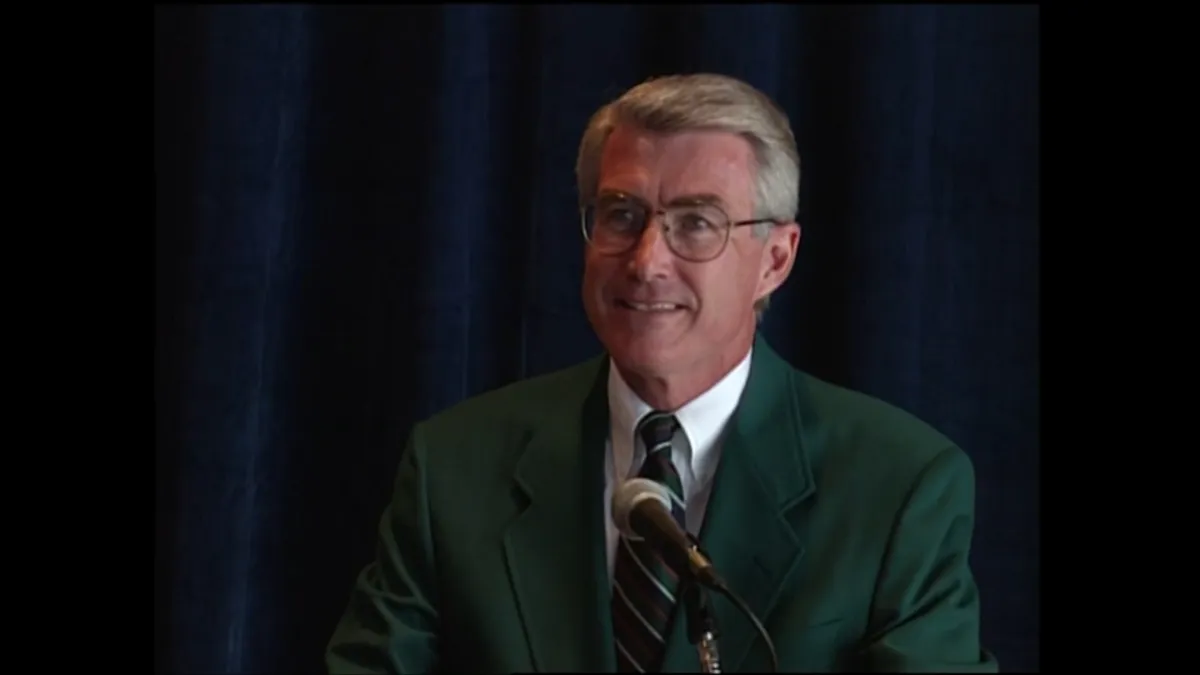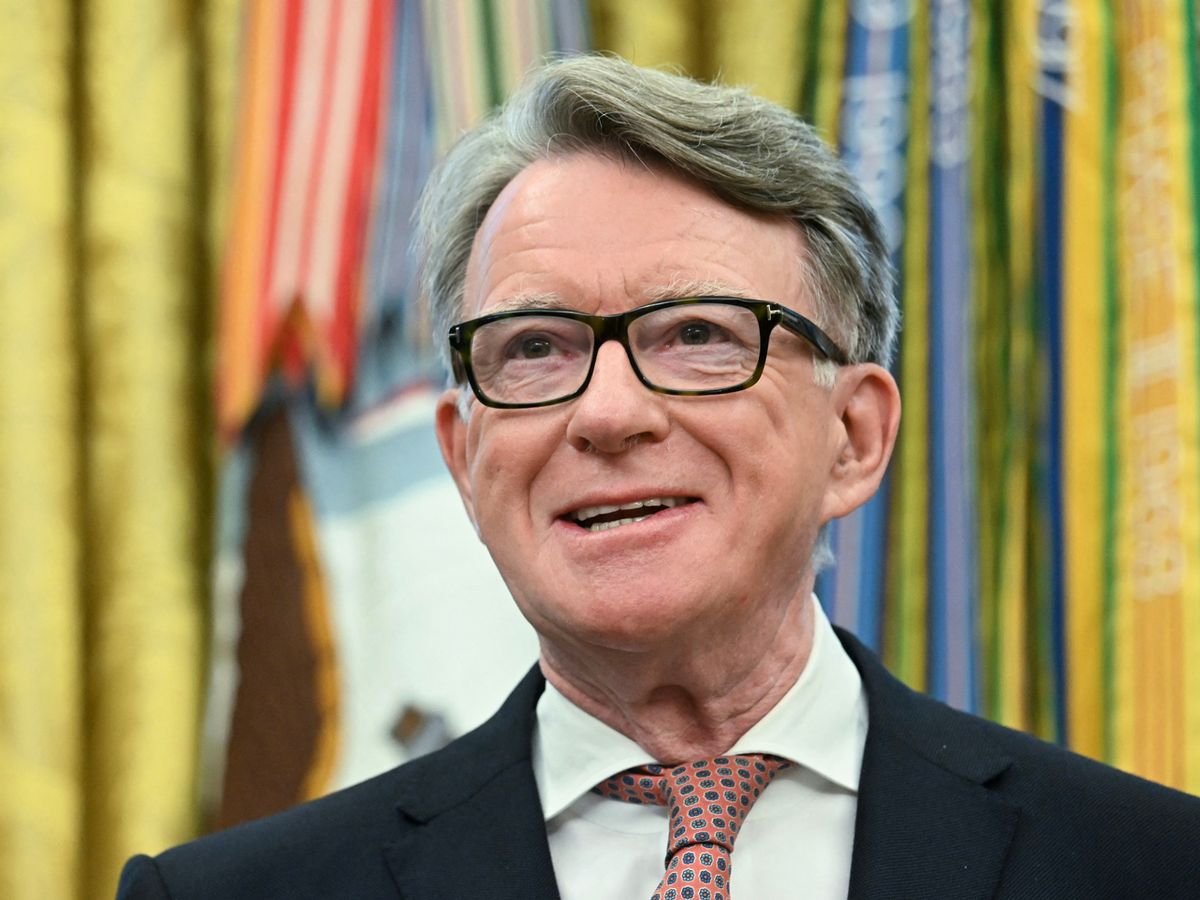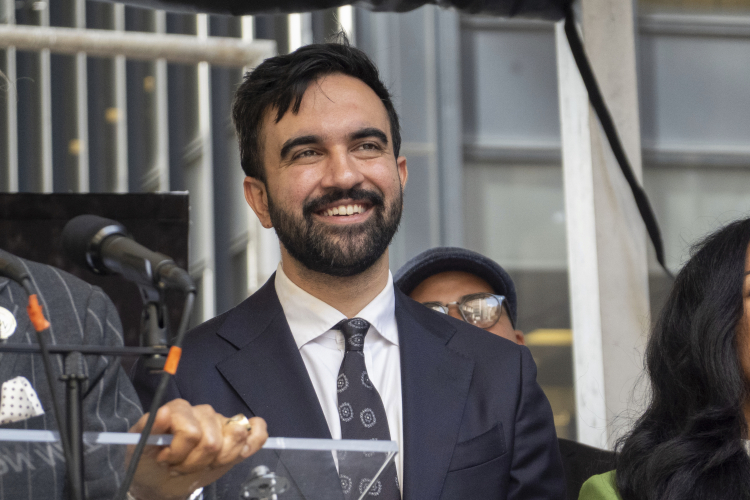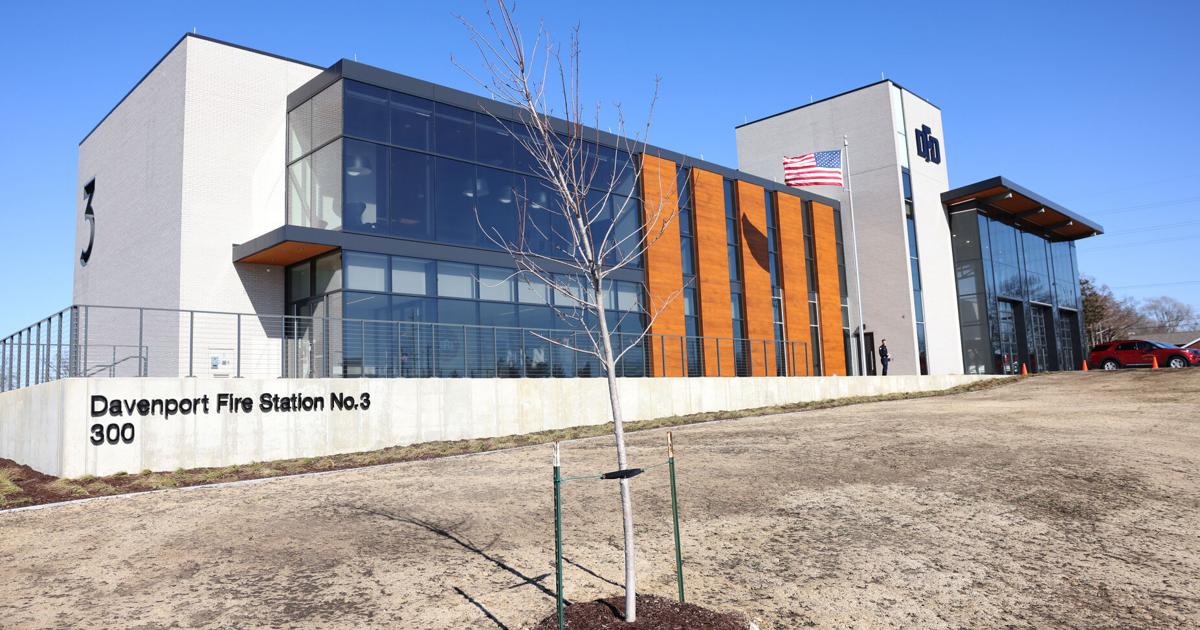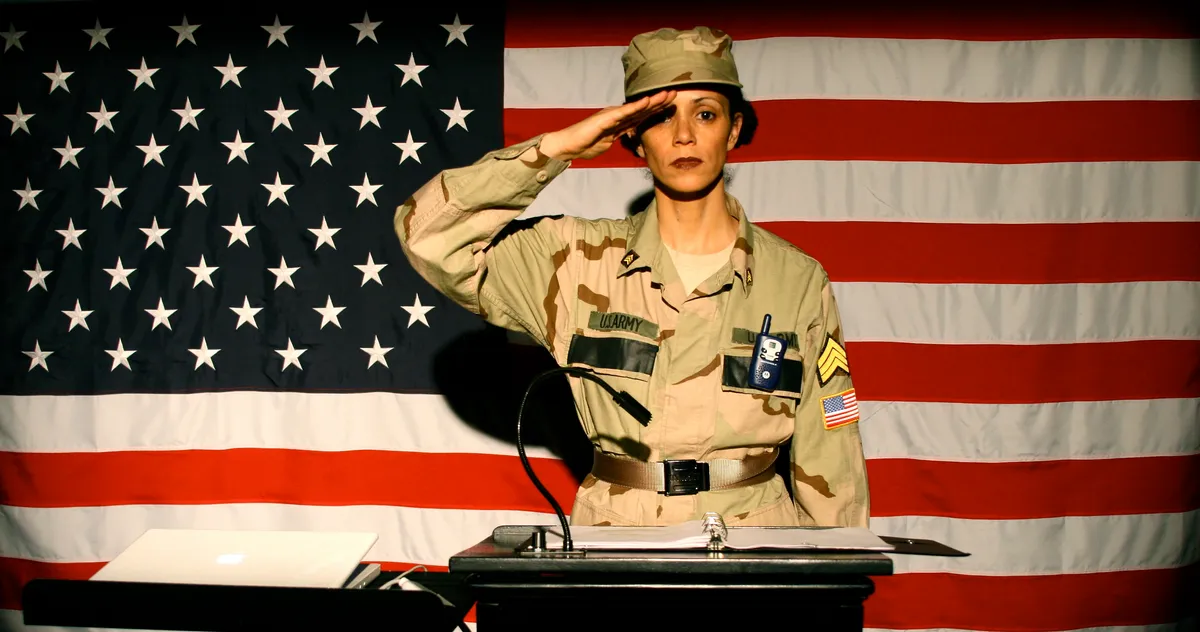
One of the first things Coco Fusco wants to tell me about herself is that she started life as an anchor baby. Before we meet, she sends me a scan of a black-and-white snapshot from the summer of 1960 that shows tiny Coco in the arms of her Cuban mother as they disembark from a plane in Havana. It was a trip that Fusco’s mother, a doctor, had been forced to take from her home in New York after she overstayed her U.S. visa, but one she managed to delay until she could bring her newborn American citizen with her. Fidel Castro’s regime in Cuba was 18 months old, and Fusco’s mother, waiting on line at the U.S. Embassy, was so determined not to get stuck there that she was willing to use her baby’s citizenship as a bargaining chip. Fusco’s first role, she says, was as a “pawn in an international Cold War game.”
The 65-year-old says she wanted me to see this photo right away because she’s tired of interviewers and audiences asking her where she’s from, as if they need to plot her identity along the Cuban American axis to get why she creates the art she does. When Fusco makes work — confrontational performances, videos, photography, writing — she’s not driven by an urge to self-document. She’d rather shine light on the issues that provoke her. In September, she opened her first U.S. survey show, “Tomorrow, I Will Become an Island,” at El Museo del Barrio, clarifying the injustices that have compelled her art-making for more than three decades: the denial of dignity to workers and immigrants; the twisted misuses of feminine sexuality; and, in her recent work about Cuba, the state’s abuses of power. Fusco can be combative. She can be a prankster. In her breakthrough 1992 performance, Two Undiscovered Amerindians Visit the West, she was both: She and the artist Guillermo Gómez-Peña dressed in pseudo-Indigenous costume, labeled themselves members of a fictional tribe, and went on display in a gilded cage before confused viewers who heckled them or even asked to feed them bananas. Artists of color have long felt pressure to capitalize on the most marginal aspects of their biographies, as white critics (most critics) have remained eager to dismiss those who address race or colonialism in their work as politically correct or identity obsessed. Fusco scoffs at that and rejects the assumption that there’s anything innate about what she makes. “It’s as if I don’t have the capacity to think about my work beyond my own life story,” she says. “That’s a denial of the intellectual labor involved.”
Fusco lives on a tree-shaded street in Bedford-Stuyvesant in the house where she raised her 20-year-old son. She often works in a bright home office lined with flat files, built-in bookshelves, and floor-to-ceiling cabinets. She’s never had a separate studio. Why waste money? “I’m not a painter. I’m not a sculptor. I don’t get dirty when I’m working,” she says. A longtime teacher who’s now a professor at Cooper Union, she finds fuel for her work by reading and sifting through the archives; she also writes essays on art and politics. “She’s very polemical,” says her friend Hamlet Lavastida, a Cuban artist who is one of her frequent collaborators. “You may not agree with what she’s saying, but she can have a serious conversation with someone even if their ideas are incompatible.”
Discomfort and destabilizing humor are part of her tool kit. She delivered one performance lecture about the behavior of Wall Street bankers, 2013’s Observations of Predation in Humans: A Lecture by Dr. Zira, Animal Psychologist, in full Planet of the Apes prosthetics. In another from 2006 that was inspired by her research on military women’s roles in the “War on Terror,” including at Abu Ghraib, Fusco stands at a dais in front of a projected slideshow wearing the fatigues of a U.S. military interrogator. “Ladies and gentlemen, it was the great British writer Virginia Woolf who argued that every woman had to have a room of her own in order to manifest her strengths,” she says. “At the onset of the new millennium, American women finally have what they need to demonstrate their prowess.” Then she shows photos of an interrogation chamber.
As Fusco was growing up between Manhattan and the Bronx, her citizenship became her mother’s way of bringing a chain of other relatives from Cuba: “All through the ’60s and ’70s, it would be like, ‘Okay, time to go to the airport and pick up this or that cousin.’” Conversations about Cuba were everyday. Steeped in the Cold War binary, her recently arrived family complained about their home country and how hard it had been to buy food (Fusco’s mother would sometimes whisper to her daughter, “They’re not that thin. Don’t pay attention to that”), while her mother’s friends who had fled right-wing governments in Argentina, Chile, and Brazil shared their own experiences. This metastasized in Fusco as both a hyperawareness of how ideology can be exploited and an aversion to orthodoxy.
In 2017, when the white American painter Dana Schutz exhibited her painting Open Casket, which depicted the corpse of Emmett Till, at the Whitney Biennial, there was a scrum of protest online and at the museum. Fusco was alarmed by the particular cri de coeur that went viral: an open letter by the British artist Hannah Black that condemned Schutz. Fusco balked at Black’s insistence “that the painting be destroyed and not entered into any market or museum.” Fusco had been Schutz’s professor at Columbia in the early aughts (she describes Schutz as a “wonderful colorist, very imaginative, not very interested in politics”) and concedes that the Till image is “not the best painting Dana ever made.” Even so, she says, “What are we, back in Nazi Germany? Now we’re going to start destroying art or calling it degenerate?” Compelled to respond, Fusco published her own ruthless analysis of the situation in Hyperallergic, tearing Black’s letter apart point by point. While she doesn’t quite praise Schutz’s painting, she defends Schutz’s right to make it, placing her in the context of white artists who have made more overtly political work than Open Casket. “The authority to speak for or about black culture is not guaranteed by skin color or lineage,” Fusco writes, “and it can be undermined by untruths.”
Fusco suspects that the essay is one of her most widely read pieces of writing. She also “got a lot of shit from peers of mine.” She saw a still from the movie Get Out on social media showing a zombified Black servant under the control of rich white people captioned, “This is Coco.” Obviously, she disagrees: “I was just like, ‘You’re crazy.’” She has a similar reaction to those who have a problem with her opinions about Cuba, where she began traveling regularly in the ’80s and has befriended many artists. Fusco disagrees with the U.S. embargo and will readily share her appreciation for many of Cuba’s post-revolution arts initiatives. “When European biennials and American art institutions didn’t do anything to express interest in cultures of what we call the global South, Cuba was already doing it,” she says. Now, though, Cuba is in a state of dire economic crisis, especially since the pandemic and the second Trump administration’s tightening of the embargo. When Cubans have protested their conditions, police have cracked down. Many artists, including Lavastida, have been forced into exile. Fusco now calls Cuba “a police state” — a position that falls afoul of many on the international left, who default to support of a country that they see as an antidote to the capitalism and global manipulations of the United States. “I could show you hate mail that accuses me of being a CIA agent. I also get hate mail accusing me of working for the Cuban government because I have traveled there,” she says. For the record, she says, she doesn’t work for either.
Fusco has made performances and videos in Cuba, but the past two times she tried to travel there, she was deported before she could make it through Customs, presumably because she has worked with artists whom the Cuban government considers dissidents. Her response has been to further publicize her criticism of the government through op-ed writing and artistic collaboration. Fusco has plans to launch a new work that she’s creating on behalf of the incarcerated Cuban artist Luis Manuel Otero Alcántara, who was punished for organizing: a digital clock that counts down to his scheduled release next year.
Despite her inability to travel to Cuba, this has been a productive, even celebratory year for Fusco. She opened another survey show in Barcelona this past spring. She’s debuting a series of photographic portraits of immigrants in New York City at El Museo del Barrio and is working on exhibitions to be shown in Europe in the years ahead. Even so, she talks like someone bracing for blowback or spoiling for a fight, especially with the American art world. Her first success was an object lesson: After Two Undiscovered Amerindians was included in the Whitney Biennial in 1993, she says, she didn’t get an invitation to produce work in New York for eight years. “The idea that my professional life has been a joyride is so far from the truth,” she says. “I mean, I’m happy. I’m employed. But the response from the Establishment has never been 100 percent ‘We’re on your side.’”
